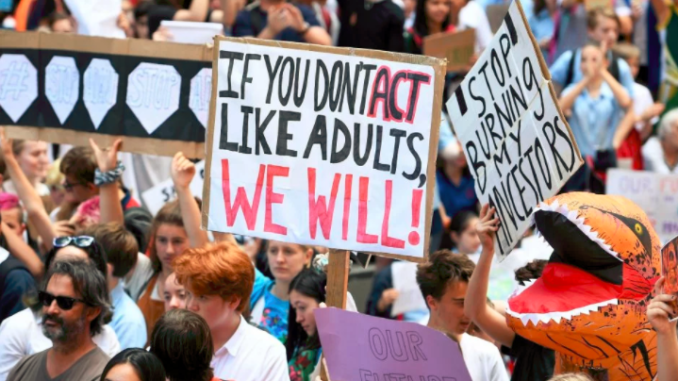
A critical comparison of online news stories published by the BBC, the mainstream online news publication, and Crikey, the digital born service.
Introduction
Greta Thunberg, an activist calling on school strike for climate change, nominated for Nobel Peace Prize on 14 March 2019. This article will compare this story from the BBC with coverage on Crikey, by analysing three aspects: journalistic writing and content production, online delivery, and technical delivery.
Crikey: School Strike for Climate founder nominated for Nobel Peace Prize
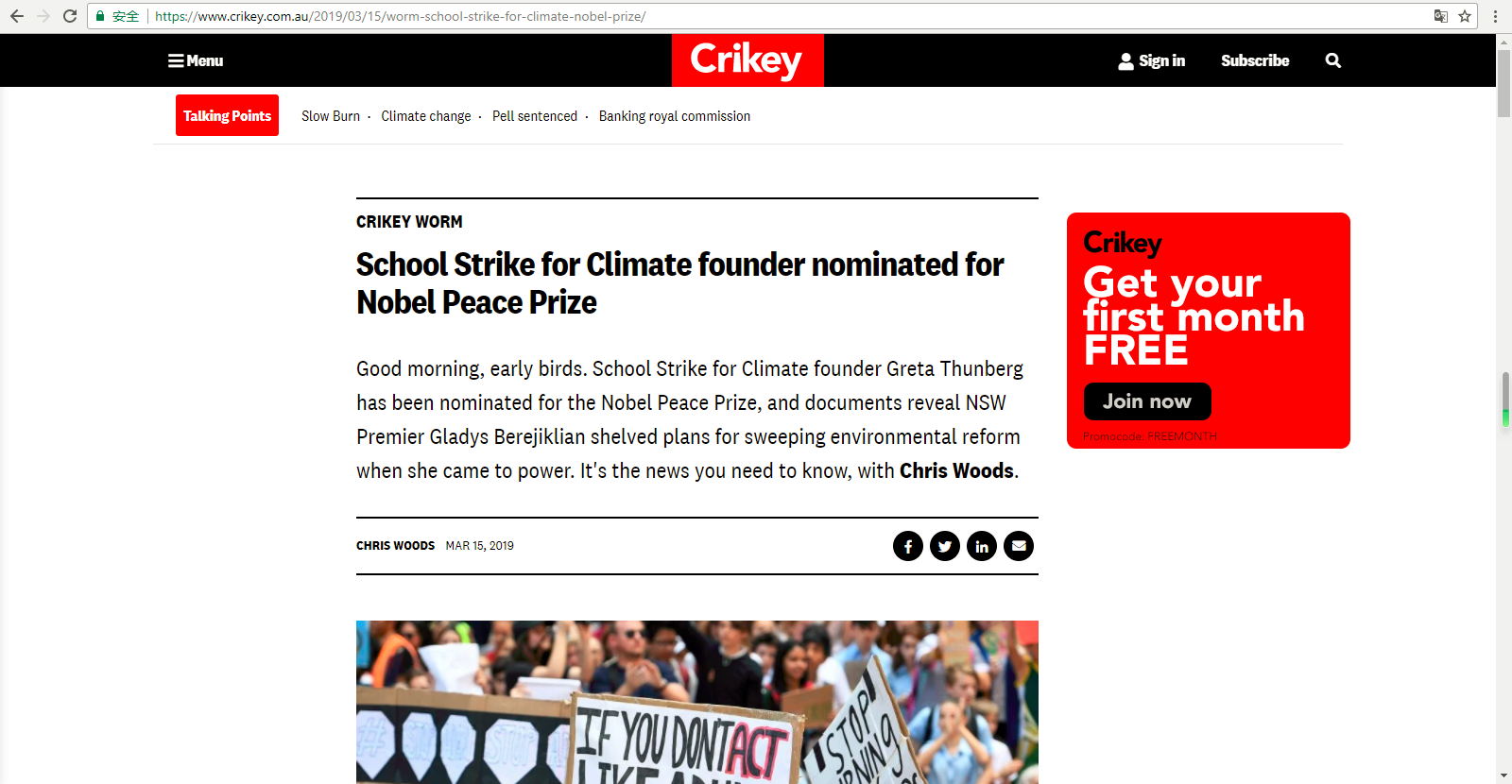
Biographical information and User analysis
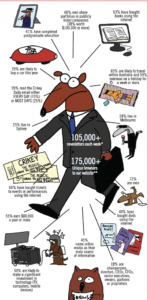
Crikey is Australia-based independent digital-born journalism, launched form 2000. It was founded by activist shareholder Stephen Mayne, a journalist and former staffer of the Liberal Victorian premier Jeff Kennett. It featuring on politics, media, business, culture and technology, while revealing stories that other media are not allowed or unwilling to cover. All Crikey content appears on their website, but most of it only open to their members. Crikey members pay for their journalism. Their support allows Crikey to maintain independence.
Middle-aged man is the biggest group of Crikey’s audiences. The proportion that aged 50 to 64 is 37%and 72% of users are male. Meanwhile, their readers are wealthy, with over half of them earning more than $80,000 per year. The report[PDF] mentioned that 18% of them is social influencers and thoughts leaders.
Story analysis
- Journalistic writing and content production
The headline, using keywords and verbs, is unambiguous and easy to understand. It has a funny intro written in a casual tone, giving a clear summary to audiences. The sentence like “Good morning, early birds,” is informal and might not happen in most of mainstream services. Yet, the sentence matches the column called “CRIKEY WORM” well. This is a good way to attract attention and establish a closer relationship with Crikey’s community. This news story uses non-linear storytelling, which enables readers to freely determined the way they reading (Bradshaw, 2018).
This news has brevity form as the content was broken up into several parts by subheadings. However, it will be more clear and readable if every paragraph sticks on one sentence.

It also has an indented quote and three emboldened words to enhance scannability, working well to signal at a glance (Bradshaw, 2018). However, considered some of names mentioned in the story, such as Mike Baird, are not really important. As a consequence, the author should think about whether they still need to be emboldened.
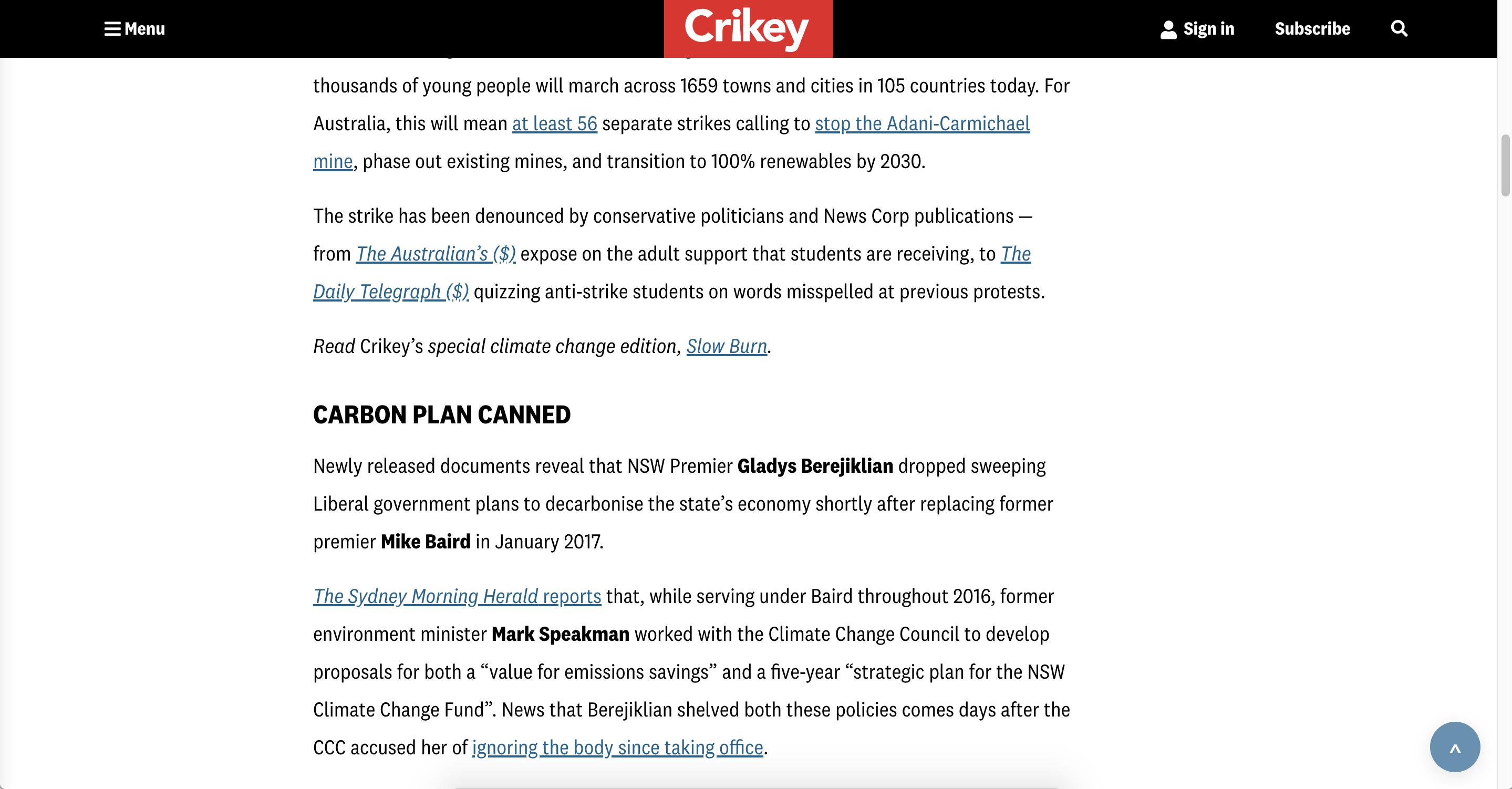
The headline, subheadings, intro and tags contain keywords, such as Greta Thunberg, protests, and Nobel Peace Prize. These keywords are relevance and importance, which can contribute search engine optimisation (SEO). Moreover, the author uses both “School Strike 4 Climate” and “School Strike for Climate”, avoiding “keyword stuffing” that might be penalised by search engines (Bradshaw, 2018).
- Online delivery
Hypertextual in this story link to “School Strike 4 Climate Action” website, Twitter, and relevant reports from different news agencies. Also, there has a hyperlink to the author’s page. It supplements some evidence and relevant information for audiences. However, it could embed more context about Greta Thunberg and Nobel peace prize, as well as the Adani and School Strike materials, which readers might also be interested in.
This story uses hypertexture politely and creatively. Common symbol is used as attribution text. For example, they show “$” in the text instead of “paywall”.

To increase the diversity of materials, when the story embedded link to Twitter, it’s better to make it looks like the example shown below. The BBC is doing very well at this point.
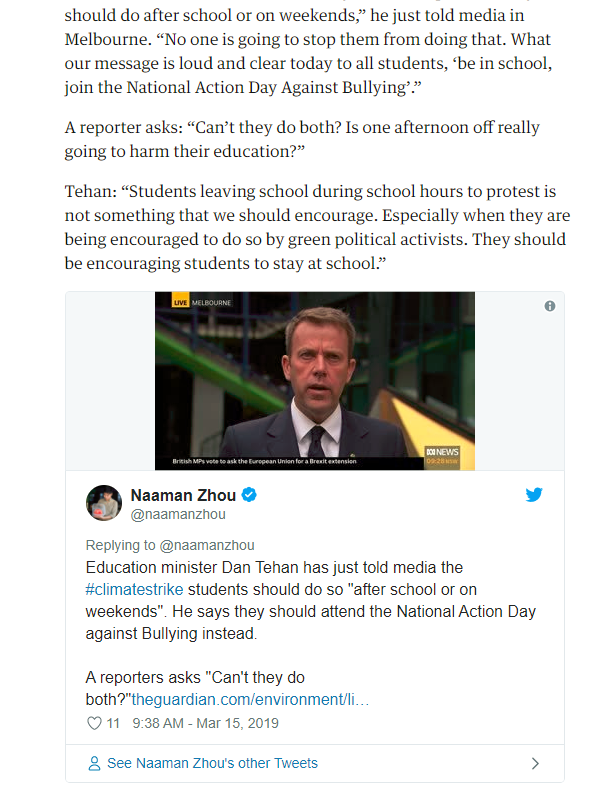
Multimedia in the story is weak. It only has one featured image that someone holding the card with “IF YOU DONT ACT LIKE ADULTS, WE WILL”. To enhance storytelling, more images, audios and videos should be added. For example, it could include podcast which interview with Greta Thunberg, talking about how School strike become global phenomenon. It also could contain video of Greta Thunberg’s speech calls on school strikes. At least images of Greta Thunberg should be added. By the way, the caption of the image does not contain descriptions with keywords.
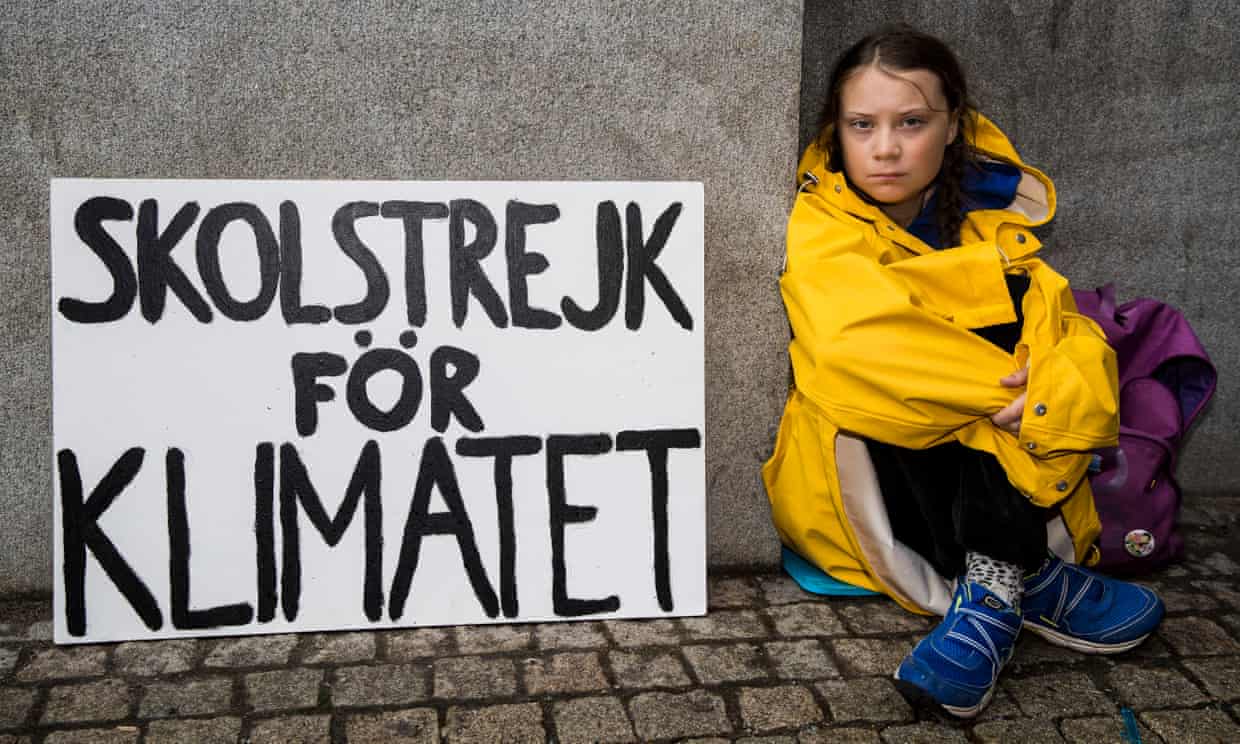
The page shows great interactivity. It has share buttons that encouraging users to share links via Facebook, Twitter, Linkedin and email. It also has registration boxes, although two boxes are unnecessary. Moreover, the comment area is at the bottom, though it is only open to subscribers.

- Technical delivery
Every function on the page works well. Especially there has a “scroll to top” button in the lower right corner which could jump to the top immediately by one click.
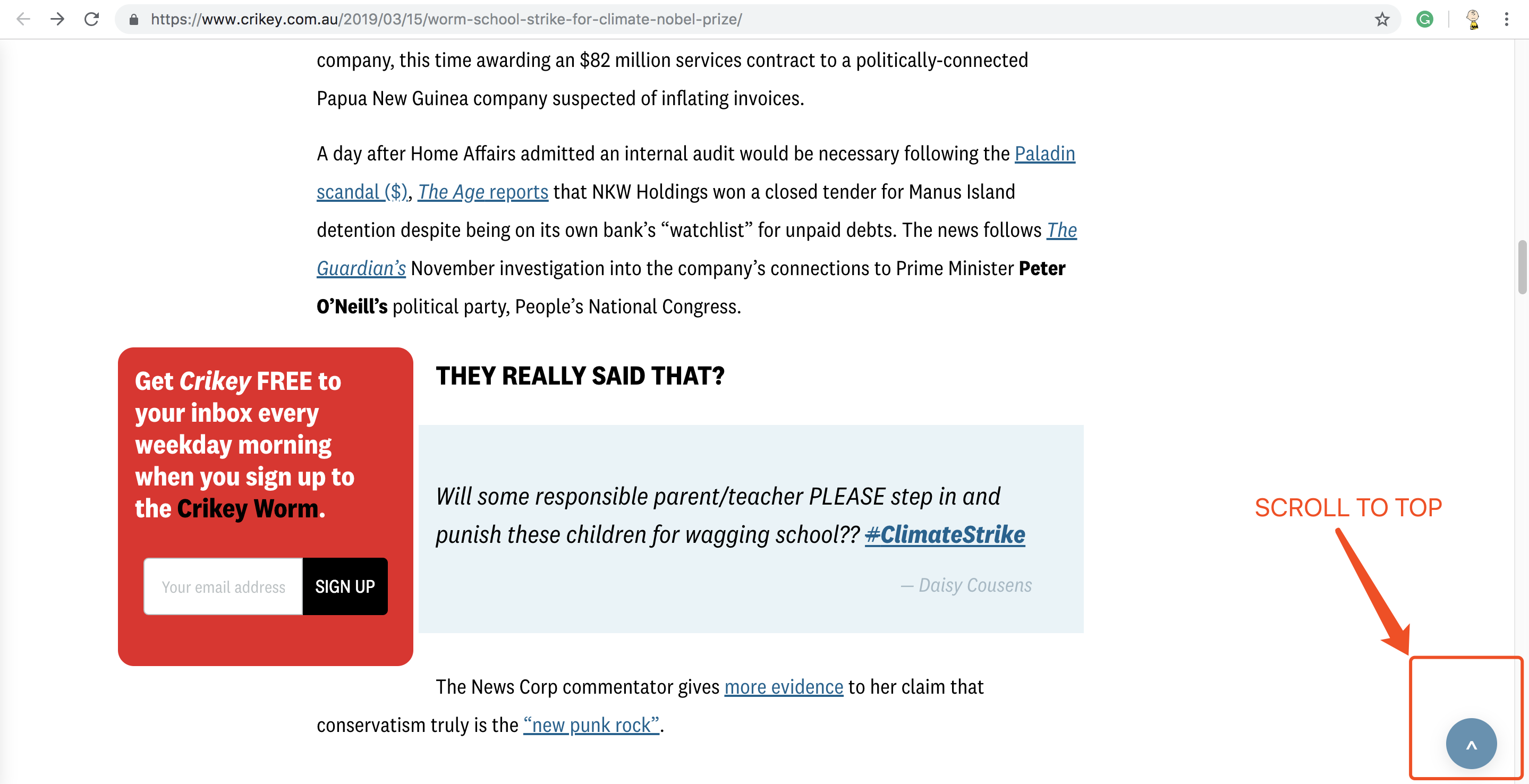
However, it has many irrelevant links at the bottom of the page. This disorganized content is confusing users. If the hyperlink opens to a new tab, it will provide a better experience. The registration boxes in the middle would reduce reading fluency. It could be placed at the left edge, since “F-shaped pattern” theory (Nielsen, 2006, cited in Bradshaw, 2018) presented that the left edge is also notable.
The BBC: Greta Thunberg nominated for Nobel Peace Prize for climate activism
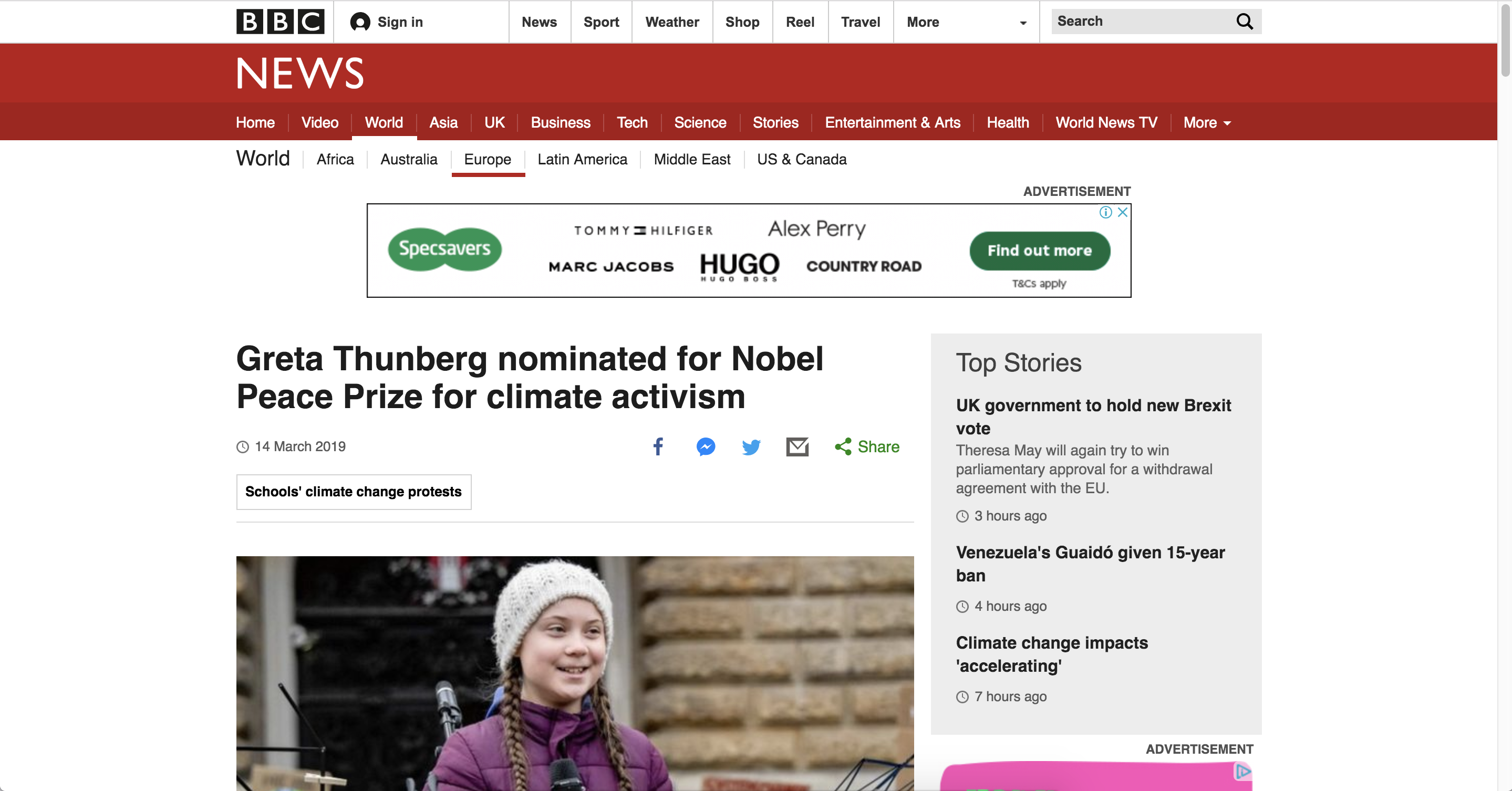
Biographical information and User analysis
The British Broadcasting Corporation (BBC) is a British public service broadcaster, funded by the licence fee paid by UK households. It is founded from 8 October 1922, which established under a Royal Charter and operates under its Agreement with the Secretary of State for Digital, Culture, Media and Sport. Service includes television, radio and online, while has broadcasting, web portals and other products. They aim to enrich people’s life with programmes and services that inform, educate and entertain.
The target audience of the BBC mainly consists of two kinds of people: Worldly Achievers and Culturally Curious. People they called worldly achievers are well educated, wealthy, and value their career as an important part of their life. They enjoy being informed and sharing their insight with others. Culturally curious, who are interested in other cultures, are also well educated and care about other people or places. They enjoy to travel around and exploration, having strong willing to develop new skills.
Story analysis
- Journalistic writing and content production
This story has great traditional news writing style, with “inverted pyramid” structure. The headline is clear. It has no intro. Yet, the strong lead illustrates the story well, which could also quickly engage audiences in. The content is brevity, as each paragraph only has one sentence.
Scannability works well in this story. The text is broken up by three subheadings, one image, and two videos. Bullet points list is embedded, link to materials which students strike again. It is a good way to catch people eyes easily.

On the other hand, there are some quotes in the story, which could be indented.

The headline that the BBC used is very similar to Crikey’s, while the only difference is the BBC speak out the name of the girl. As “Greta Thunberg” now is become famous and going global, the name could also be a keyword phrase. Tags that used in this news are closer to trending topics than Crikey’s story, such as “environment” and “climate change”.
- Online delivery
Links here are plenty. Background of Schools’ climate change protests is given, as well as lists of candidates for the Nobel Prize 2019. It also links to a report that introducing Greta Thunberg. Other hypertextures are relevant news stories, mainly form the BBC. Twitter is embedded for twice. However, there have two sentences used as hyperlinks, which are ambiguous. Hypertexture should be short and precise phrases.
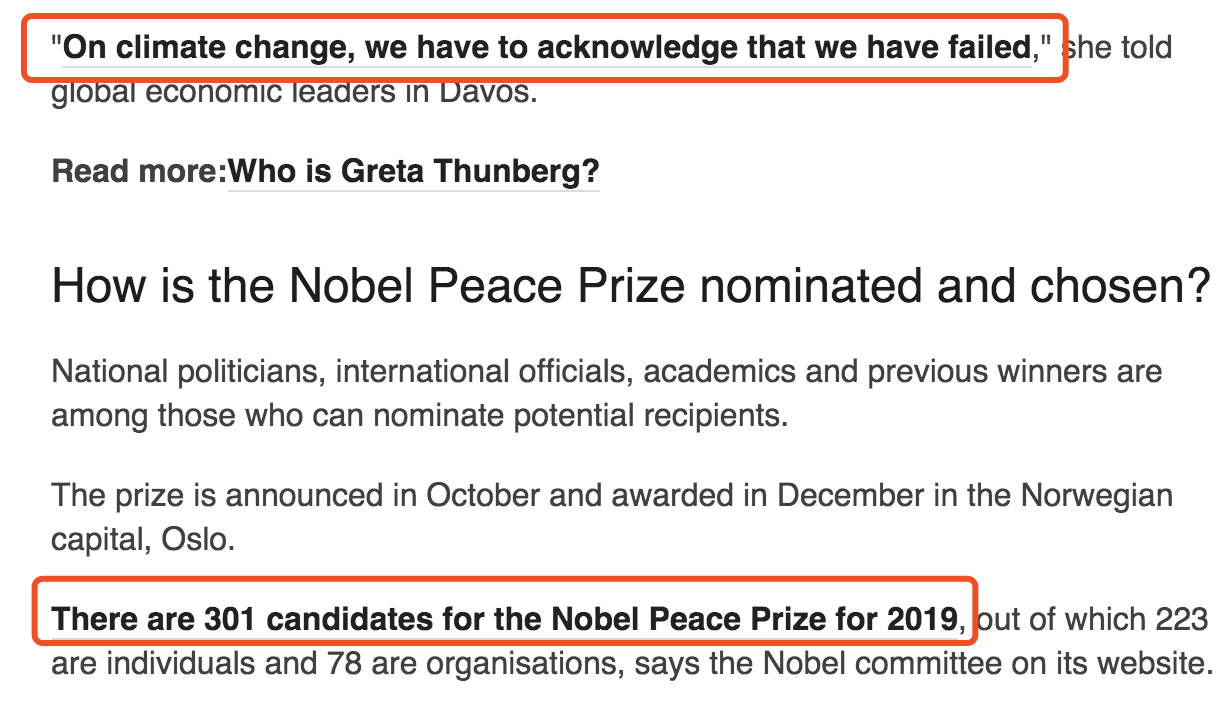
Multimedia used well in this story. It has the image with description, shows that Greta is giving a speech. Two videos are related to school strike, while they refer to different angles. One is “The students skipping school to fight for action against climate change”, and the other is “The Swedish teen behind the climate strikes”.
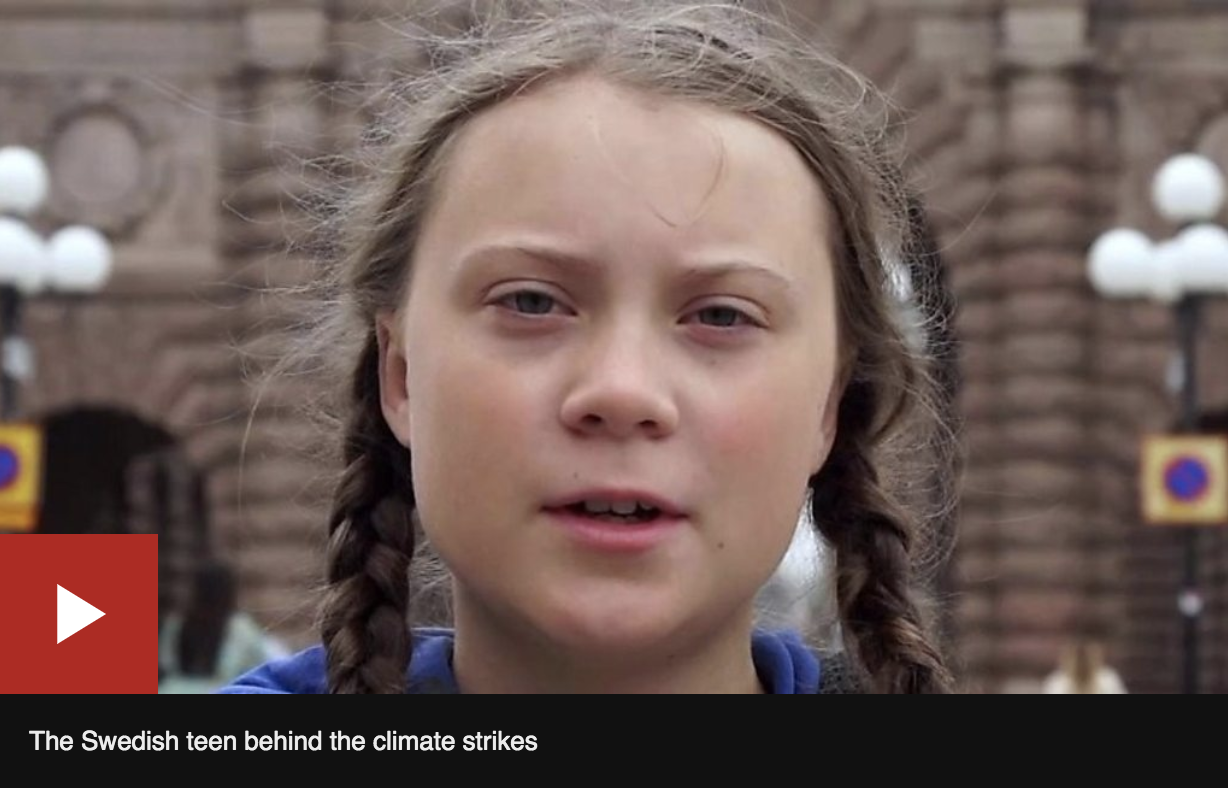
Several share buttons present in both at the top and the bottom of the page, including email, Facebook, Messenger, Twitter, Pinterest, and Linkedin.
There is no author mentioned in this news.
- Technical delivery
The interface in this page is well-organized, even the area at the bottom which presents related news. Multimedia are playable, and all of the links work well. Yet, share bottom of “messenger” doesn’t work for me. There has a video advertisement in the middle, which will cost data and interrupt reading.
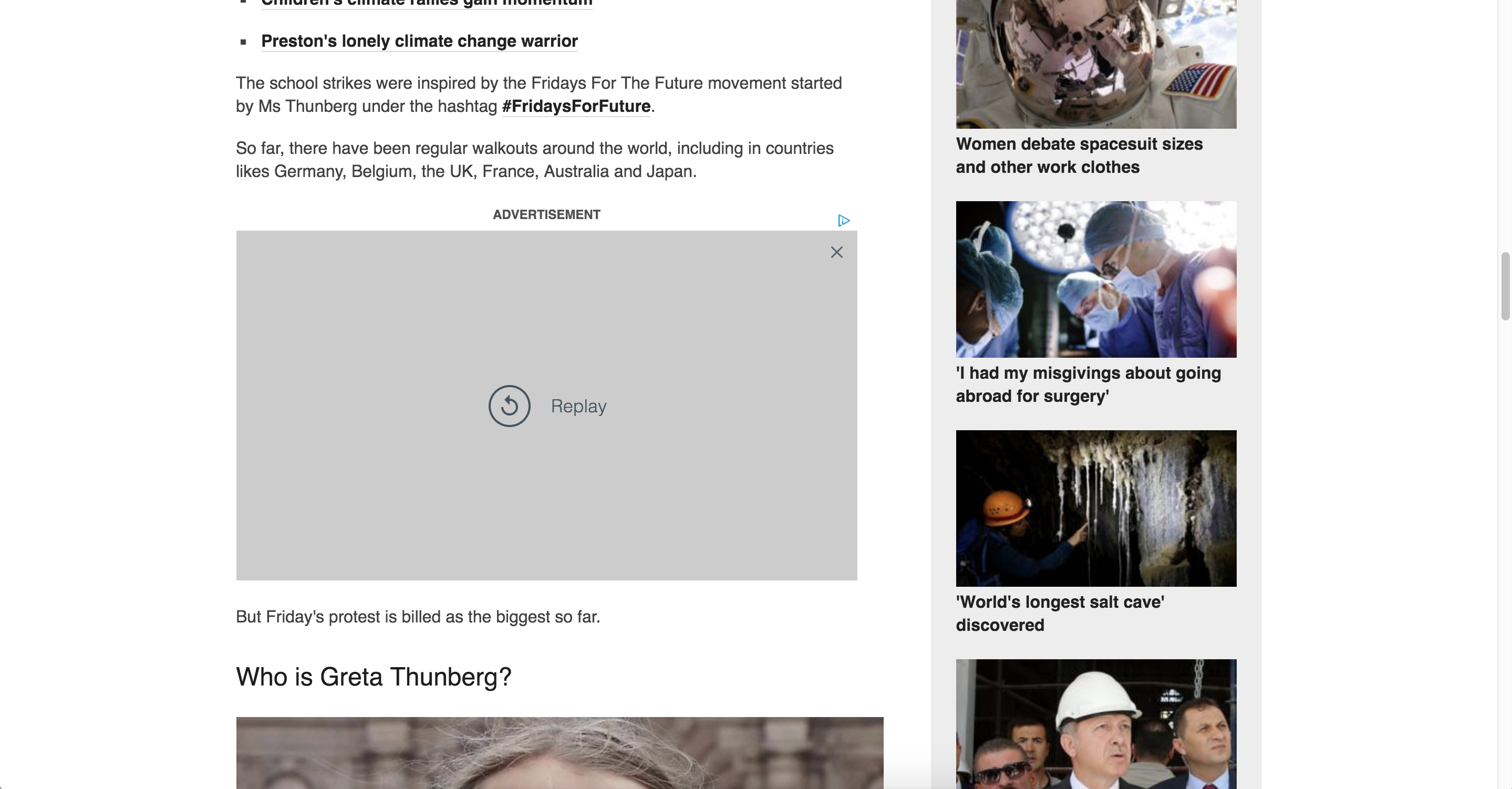
Conclusion
By comparing the BBC with Crikey, we can find out that as online journalism, they have similarity in some aspects. For example, they embed hypertext, linking to other web pages and social media. At the same time, they use multimedia, including but not limited to images. In addition, both of them have interactive functions such as “share” and “like”.
However, as digital-born journalism, Crikey clearly pays more attention to the Internet user experience than mainstream media does. They are closer to their audiences while having an advantage in interactivity. The BBC, as a mainstream service, is more professional, and their stories are more comprehensive. They make bold attempts on the Internet, but it seems that they still have more sense of distance from their users.
Reference:
Bradshaw, P. (2018). The online journalism handbook : skills to survive and thrive in the digital age (Second edition.). London, [England] ;: Routledge.
Greta Thunberg nominated for Nobel Peace Prize for climate activism. (2019). Retrieved from https://www.bbc.com/news/world-europe-47568227
Woods, C. (2019). School Strike for Climate founder nominated for Nobel Peace Prize. Retrieved from https://www.crikey.com.au/2019/03/15/worm-school-strike-for-climate-nobel-prize/
BBC Audience. (2019). Retrieved from https://www.bbcglobalnews.com/audience/
Crikey. (2009). Crikey Rate Card. Retrieved from https://www.crikey.com.au/wp-content/uploads/Media/docs/Crikey-Rate-Card-Jan09-35f8aa43-5212-4a8d-808a-055b4972aba3.pdf


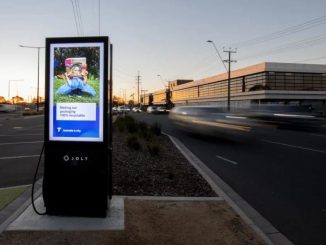


Be the first to comment